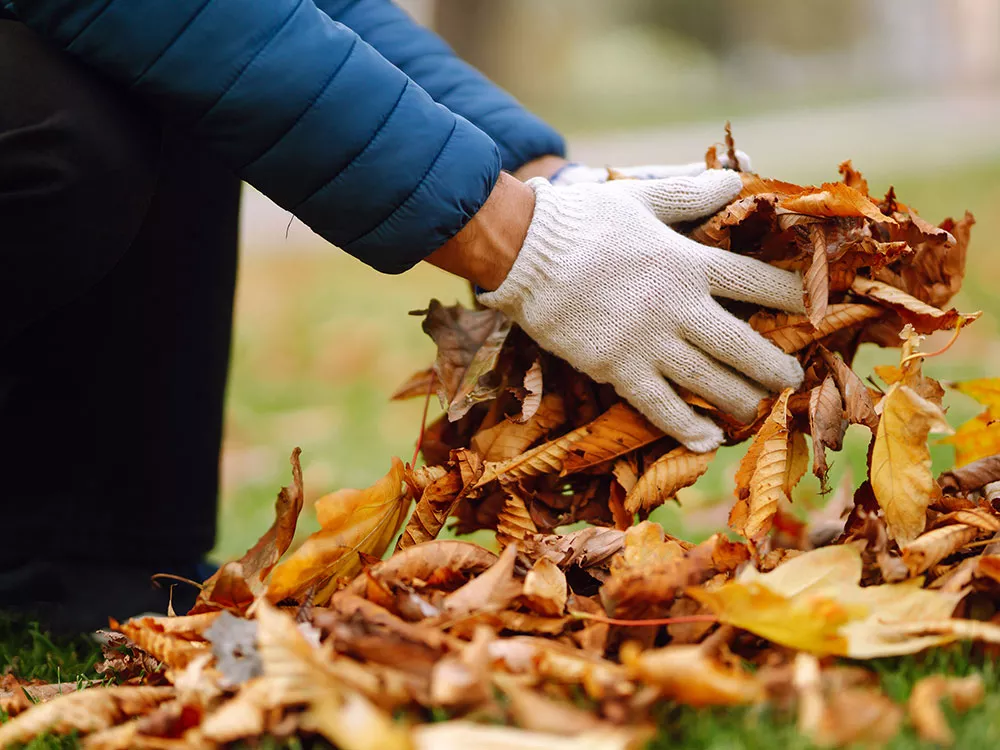Now live: The 2025 Canopy Report. Learn how Americans see trees. GET THE REPORT
Bulletin
How to Recycle Shade Tree Materials
“Sustainability” has almost become a household word in recent years. As a society, we seem to be realizing that land and resources are limited and that stewardship is an increasingly important responsibility. Recycling is one of the keys to sustainability. In this issue, you are invited to explore some of the ways that leaves, pruned limbs, and removed trees can keep contributing to the livability of our communities instead of being a wasteful burden.

In the early 90s, the Arbor Day Foundation was among the first major organizations to adopt the practice of using recycled and recyclable paper.
This included office stationery, envelopes, and our many publications, such as Tree City USA Bulletins. From its beginning, we have also featured an aggressive recycling program for all wastes at the Lied Lodge & Conference Center at Arbor Day Farm. We continue these practices today and regularly encourage members to be conscious of conserving our nation’s resources.
There has been significant progress in the past couple decades toward making recycling a part of corporate and individual lifestyles. Part of the good news is that according to the Environmental Protection Agency, recycling and composting prevents more than 87 million tons of material from being disposed, up from only 15 million tons in 1980. This prevents the release of approximately 168 million metric tons of CO2 into the air — the equivalent of taking more than 33 million cars off the road for a year. Solid waste generated in the U.S. has stopped its steep climb and, in 2005, began to level off. The bad news is that we still produce more waste than we should. On average, each of us generates from 2.7 to 4.6 pounds of waste per day, adding up to a staggering 258 million tons of trash per year.
Along with the need to wisely use natural resources is the need to conserve land and water by minimizing the growth of landfills. Today, the EPA reports that more than 13 percent of the nation’s waste materials are from trees, bushes, grass clippings, and other discarded vegetation. This equates to 34 million tons of material added to the landfills –– and often at a cost to homeowners and taxpayers. But again, there is also some good news to report. Currently about 61 percent of what EPA labels “yard trimmings” is being recovered.
While the percentage of trees’ waste being recycled is encouraging, there is still much room for improvement. As cities and towns face the problem of solid waste disposal, street and park trees may come under greater scrutiny as ways to save money and reduce wastes. Rather than reducing the number of trees, we suggest turning the problem into an opportunity. This issue presents many examples of how recycling of tree material can be used to reduce the burden on landfills and contribute to making our homes and communities better places in which to live.
Many symbols are used to identify recycled or recyclable materials. In some ways they are to recycling what Smokey Bear is to wildfire prevention. These are visual ways to keep recycling on the conscience of the public while at the same time helping people make decisions and act responsibly.
This is called a “mobius loop” and comes in many designs and colors. Usually it indicates that the object can be recycled. Sometimes, however, it is used to indicate that the material contains recycled content. If so, a percentage figure appears in the middle to show the amount of recycled content.
![]()
This symbol denotes products certified as compostable by the Biodegradable Products Institute. But even if a product has no symbol, it might still be compostable.
![]()
In This Bulletin
Here’s what’s inside:
- Problem or Opportunity? – understanding how to use tree waste in positive ways
- Recycling Leaves – steps for making a compost pile
- Recycling Tree Branches – three ways to use pruned branches
- Trunks and Limbs – tips for producing firewood
- Recycling and the Community Forestry Program – ways cities are leveraging recycling programs
